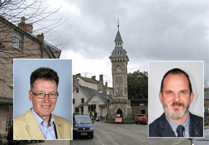People in Wales face differences in rates of cancer depending on their housing, job and ethnicity, according to a new study by Public Health Wales’ Welsh Cancer Intelligence and Surveillance Unit (WCISU).
The report’s authors linked accurate all-Wales cancer registry data to Census 2011 data for the first time, using techniques that kept individuals’ data confidential and anonymised.
Analysis of the data revealed how cancer rates varied by ethnicity, housing type, and occupation across the population of Wales.
The study found that people living in overcrowded housing had a cancer rate seven times higher than those with two or more spare rooms - even after accounting for differences in age.
Residents of social housing had a cancer rate nearly three times higher than people who owned their home outright.
There were also differences in cancer rates between ethnic groups.
While the White population had the highest cancer rates overall – in part due to the older age of the White group - people from Mixed ethnic backgrounds were more likely to be diagnosed at a later stage, potentially limiting survival from cancer.
Black men were more likely to be diagnosed with prostate cancer and Asian women were more likely to be diagnosed with breast cancer.
People working in lower-paid and manual jobs - including process, plant and machine operatives - had the highest rates of cancer incidence.
They were also more likely to be diagnosed at a later stage than those in professional roles.
Professor Dyfed Wyn Huws, Director of the Welsh Cancer Intelligence and Surveillance Unit, said: “This is the first time we've been able to look at unfair inequalities in cancer rates through this level of detail using individual data across the whole of the Welsh population.
“It’s a major step forward in understanding and reducing cancer inequalities in our society.”





Comments
This article has no comments yet. Be the first to leave a comment.